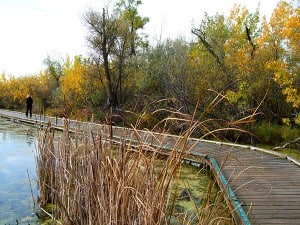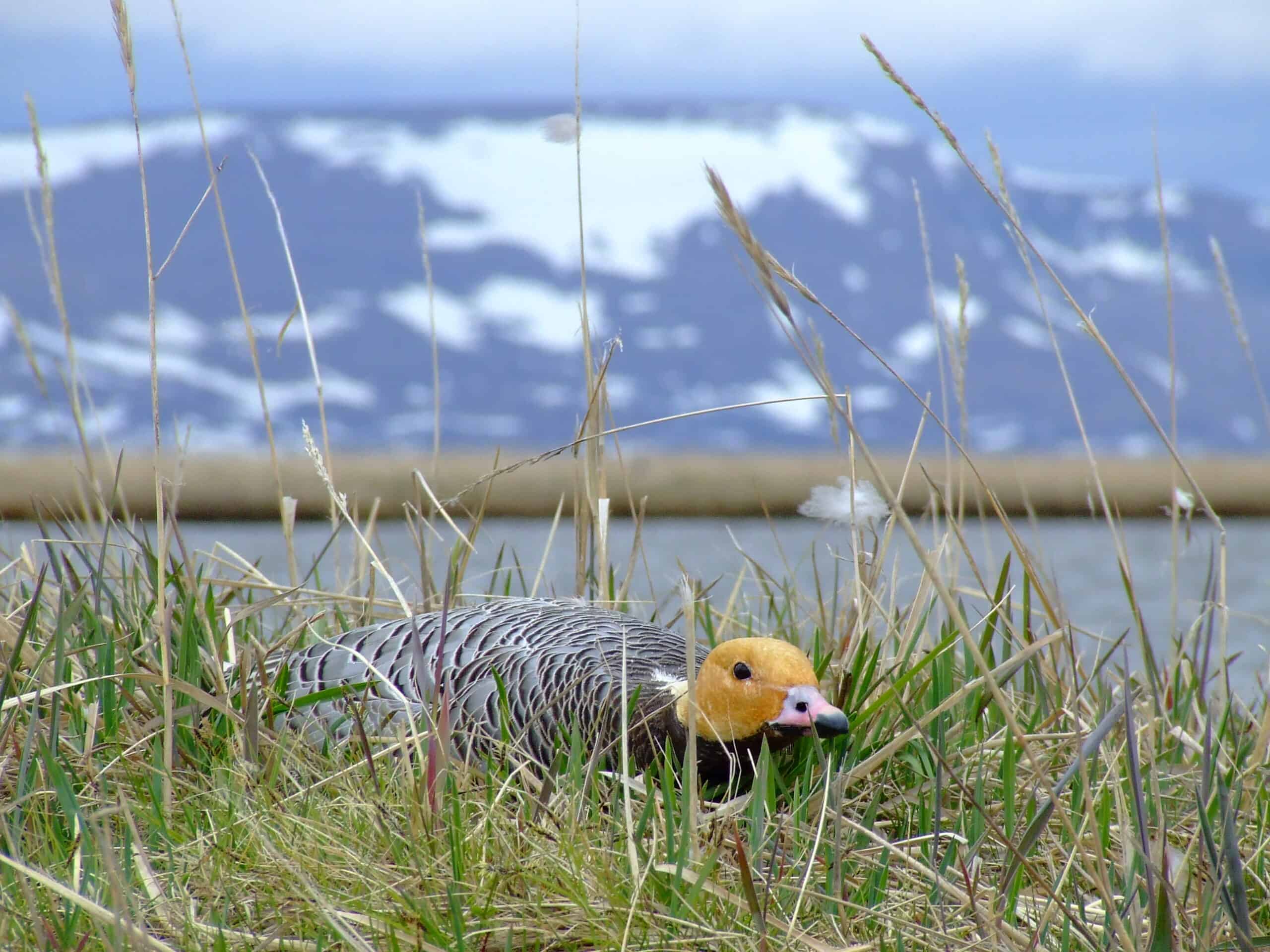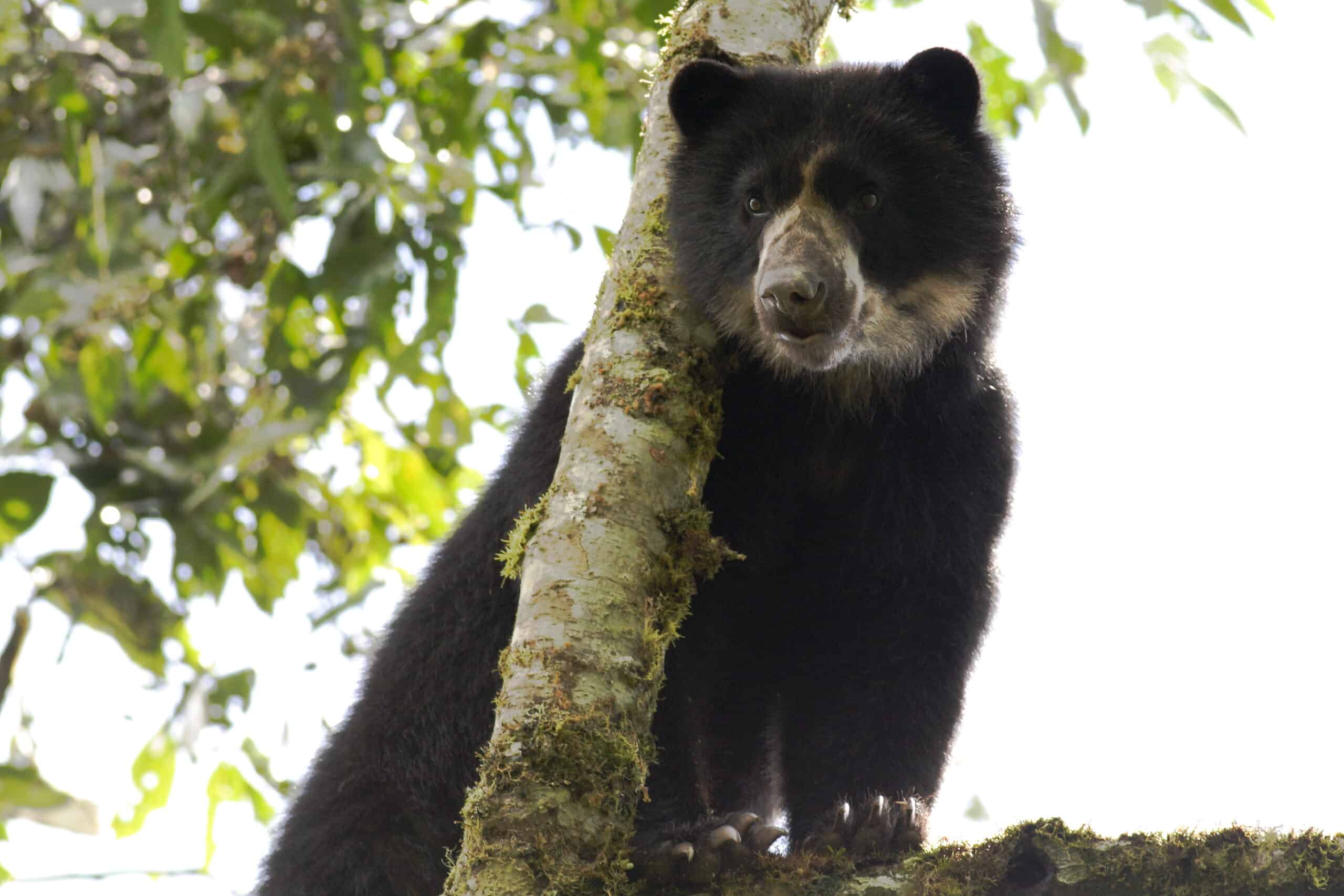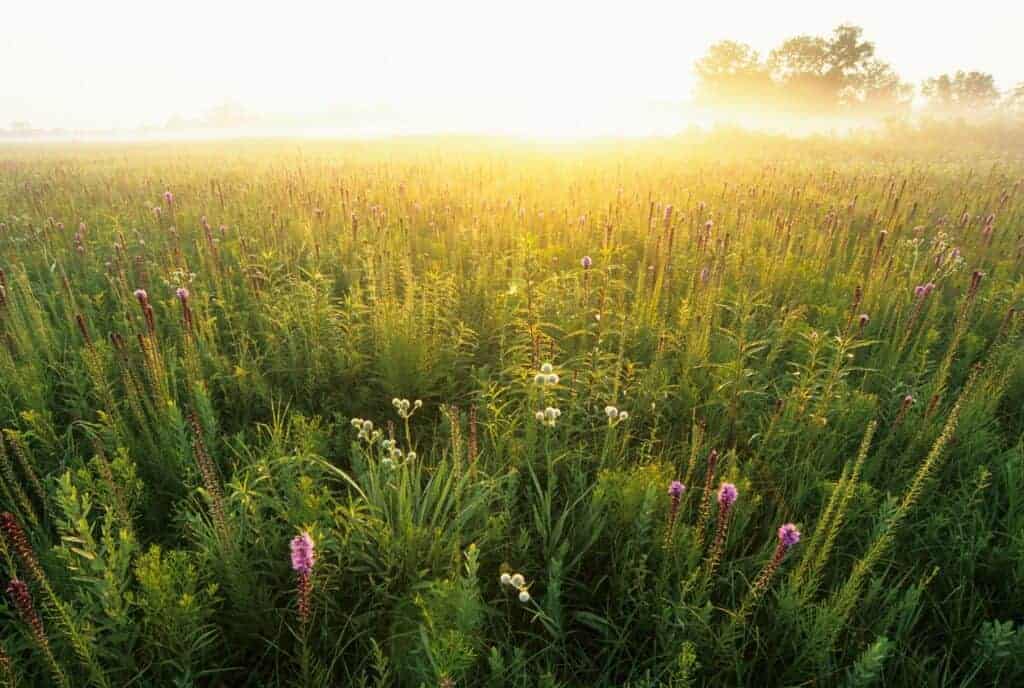Share this article
TWS Conference Field Trip: Up Close with Bison and Birds
Join The Wildlife Society’s Field Trip to FortWhyte Alive during the 2015 TWS Annual Conference. Learn more about the educational and professional networking opportunities available to you at this year’s Annual Conference at our conference website.
You might be in reaching distance from close to 30 grunting, munching bison — the world’s ninth largest animal — if you decide to take the FortWhyte Alive Bison & Birds field trip, one of the many attractions at The Wildlife Society’s 22nd Annual Conference in Winnipeg, Manitoba.
In fact, during one of the tours that FortWhyte Hospitality and Group Services Manager Dana Forster went on, one yearling bull walked right up to the bus, ready to hop on with the tourists. “They’re quite curious,” she said, referring to the young bison. “They haven’t learned yet that they shouldn’t get that close.”

A tourist walks on the floating boardwalks in FortWhyte Alive. TWS members will have great bird watching opportunities here, and will get the chance to take beautiful photographs.
Image Credit: FortWhyte Alive
This fall, leaves will be in the process of changing colors and aspens and oaks will be turning yellow while you and other TWS members participate in a two-hour experience customized specifically for The Wildlife Society. The temperature will be cool, and a sweater or fleece will be appropriate for the tour, Forster said.
The excursion will begin with a bison safari. You will travel through the aspen forest onto the open prairie where bison will stand roughly 20 feet away from a 20-passenger bus. You’ll get the chance to admire their large size and thickening fur, which grows during fall to help prepare the animals for the winter, according to Forster.
Currently, there are about 30 bison in the herd, although they are expected to have between seven and 10 calves this season, Forster said. The bison experience will last about 40 minutes, and a tour guide will discuss how bison helped shape Manitoba’s history as well as the lives of Aboriginals, Métis and Pioneers. You will also learn how the herd is managed, the North American history of the bison and about individual members of the herd.
One of the most fun parts of the tour is observing the younger bison, Forster said. Field trip attendees will then have the opportunity to stand in the doorway area of the bus, two people at a time, to take photographs.
But the bison aren’t the only attraction on the tour. The experience will continue with a walk through the wetlands birdwatching experience, which is extraordinary since the FortWhyte Alive area was once an industrial clay quarry. “This is a great example of the power of nature and reclaiming areas we’ve destroyed by digging huge pits,” Forster said.
You will also get the chance to grab your binoculars and bird watch, an especially exciting experience since the tour will occur in the midst of fall migration. Your group will make its way to floating boardwalks, and then to a duck blind as well as a bird feeding station, where there will be great spots for photography, so be sure to bring your camera. Fall warblers will be migrating, and every day there are different birds depending on winds and temperatures, Forster said. You also might see snow geese that stay in the area for four to five weeks. They feed on fields in Winnipeg and come to use the FortWhyte’s lakes, Forster said. You will also see birds that are there all the time including a variety of ducks, Canada geese and songbirds.
You’ll then head to the Interpretive Centre, where there will be a live exhibit of burrowing owls, which are endangered in Canada. During this stop, you’ll hear about FortWhyte Alive’s efforts to support the recovery efforts through their breeding program. “So far, we’ve had two successful mates here,” Forster said. “So much of the grassland is used up, and they definitely need our assistance.”
Burrowing owls are the only owls that nest in the ground, but they can’t dig their own burrows. So when entering the Interpretive Centre, you’ll notice that the owls are cohabitating with prairie dogs in an area with grass and dirt floors, but no glass separating the animals from onlookers. This creates an opportunity for you to observe both creatures up close from behind a railing.
The final destination of the experience will be the North Trail Walk, where you will learn about the indigenous people of Manitoba and their culture. You’ll get the chance to enter a Plains Cree Tipi and learn about how they are constructed to stay cool in the summer and warm in the winter. You can also participate in an atlatl throwing competition. Before guns and the bow and arrow, indigenous people used this spear thrower to hunt bison. And after you get some energy from throwing spears, you can step inside a one-room pioneer sod house to relax and enjoy wild bush tea and bannock, a type of flat bread, cooked over a campfire.
Manitoba has a variety of habitats including lakes, aspen forest, prairies and grasslands. At FortWhyte Alive, individuals will get to experience many of these while simultaneously learning about the Manitoba heritage. The trip is priced at just $25 per person, includes round-trip bus transportation, and will be available on Monday, October 19 and Wednesday, October 21.
“The coolest thing about the experience is getting that close to the bison,” Forster said, adding that learning opportunities are also exciting. “It’s a great place to learn a little bit about the province, especially if you’re here for the first time. FortWhyte’s a great place to experience all of the different habitats.”
Learn about another exciting opportunity to learn about Manitoba wildlife at our Annual Conference in this article about our field trip to the International Polar Bear Conservation Centre.
FortWhyte Alive History and MissionFortWhyte Alive, a Gold Sponsor of The Wildlife Society’s 22nd Annual Conference, draws more than 110,000 visitors annually. FortWhyte Alive started out as The Canada Cement Company, now Lafarge, Inc., a company that mined clay and gravel to make cement. In the 1950s, the FortWhyte site was no longer needed due to floods and other sources of clay, and The Manitoba Wildlife Federation took over the site to use it as habitat for wildlife. Eventually, the focus shifted from wildlife conservation to environmental education, and the FortWhyte Foundation was established. FortWhyte Alive is dedicated to providing programming, natural settings and facilities for environmental education, outdoor recreation and social enterprise. Their goal is to promote awareness and understanding of the natural world and actions leading to sustainable living. |
Header Image:
A bison and a calf in FortWhyte Alive. One of the field trips for this year’s TWS conference in Manitoba is to FortWhyte Alive, where TWS members can see bison up close and enjoy bird watching.
Image Courtesy: FortWhyte Alive








